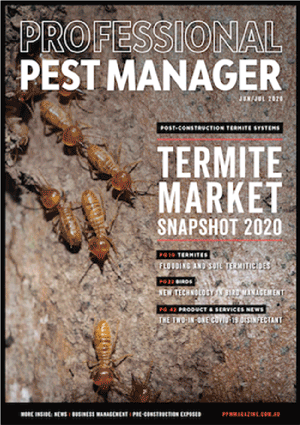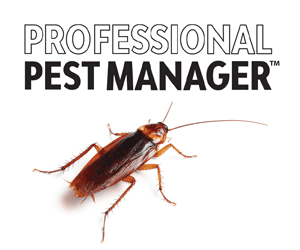The best way to ensure consistent results with termite work is to use products that are designed and tested for Australian conditions.
Pest managers know it’s important to use registered products and that ‘the label is the law’. However, pest managers should also understand a little bit about how products get registered, as it could affect their purchasing decision. This is particularly the case for termite protection products when it is important that pest managers can trust the performance of the products they use. This is not only important for their own peace of mind but also for that of their customers.
In Australia, when registering a new product, the registering company needs to provide a complete data set, which includes a toxicology and efficacy package. The efficacy package will often include both laboratory and field tests, to demonstrate the product works as claimed. For termite products, this typically means field trials running for at least three years and normally five years, in various locations around the country. The registrant of the new product typically has this data ‘protected’ for a period of time. However, after this time, it becomes possible for other companies to register similar products making the same claims on a reduced data package. These registrations are often submitted on the basis of bioequivalence, through argument and/or reduced efficacy package.
The implication of this registration process is that although a pest manager may see similar registered products making the same claims, it does not mean that the products have the same efficacy data set behind them. This goes beyond just the registration data; typically, the innovator has also gone through a long product development period to test prototypes to arrive at the final design. Not only does this give the manufacturer (and pest manager) confidence in the product’s performance, it also provides the manufacturer with a deep understanding of how the product works.
This need for extensive field testing as part of its development process is key to all Termseal Australia innovations. Even with small incremental innovations, Termseal doesn’t make assumptions – the team carries out extensive field testing. A case in point is the recent development and launch of Ura-fen Shield TWB 100 mm.
Ura-fen Shield TWB is a triple layer sheet providing a moisture proof and termite resistant barrier for use in pre-construction termite protection. It has been on the market for over 12 years and is available in rolls of various widths (300 mm, 900 mm and 1800 mm) for a multitude of applications. However, there was a need for a thicker sheet foam material for use in cold joints, construction joint, and isolation joint situations.
When doing field testing with termites, the product always needs to be tested against Mastotermes darwiniensis, or ‘Mastos’, as per AS3660.3-2014. With their voracious appetite and chewing power, testing physical or chemical termite products against Mastos is the ultimate test. Australia is the only country in the world where Mastotermes darwiniensis is considered an economically important termite.

termite access, were buried in the ground in Townsville in areas of
high Mastotermes activity
Even though Ura-fen Shield TWB 100 mm is the same product as the proven Ura-fen Shield TWB, just with increased thickness, Termseal still embarked on a series of field trials during development. It proved an essential exercise, as it highlighted the need to improve the manufacturing processes to ensure an even distribution of active through the thicker foam layer. The result: a new product that delivers proven protection even against Mastos.

“At Termseal, field testing is part of our DNA. When you’re selling a product that is meant to deliver termite protection for ’50 years or the life of a building’, we need to know the products works. It gives our customers confidence they can trust our products and it gives the homeowner peace of mind that their home is protected by a proven product,” commented Peter Brigden, general manager at Termseal Australia.
“Our advice to all pest managers, no matter the product you use, is to ask the manufacturer to provide proof that demonstrates their product works under Australian conditions.”


